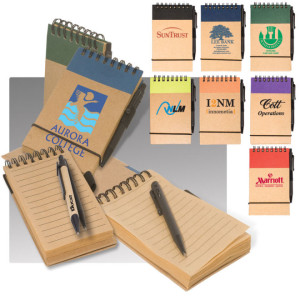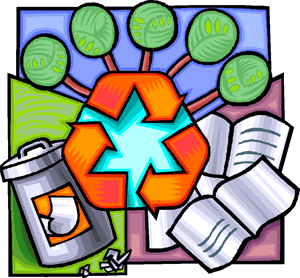In addition to having Cost Control Associates looking at your waste removal services to find operating cost savings, you should look at the amount of waste your organization is generating.
Think in terms of minimizing the waste stream. The waste stream is the flow of waste from original purchase all the way through to disposal of any and all materials in a business. To minimize the ultimate waste removal cost, first identify opportunities to better manage and reduce these costs early on and throughout the waste stream.
There are several areas where you can have an impact on the waste stream, six of which are outlined below with some tips you can put into action right away.
6 Areas Which Can Reduce Costs Associated with Waste Stream
1. Purchasing
Establish purchasing guidelines and standards controlling what and how your organization will approach procurement. Where possible buy durable, high quality products that will last and identify when you can purchase reusable products.
Centralizing the purchasing function is another good practice to reduce waste and cut costs in purchasing. As you develop better purchasing practices, you should think about tracking material usage. The better you track actual usage, the more accurate your ordering will become.
2. Packaging
Packaging material can accumulate significant waste removal costs and inefficiency. However, many suppliers and distributors are making programs available to make it easier to find eco-friendly and reusable options. In many cases all you have to do is ask for the availability of these programs.
In the meantime, utilize reusable boxes and reuse any boxes you receive. Why break them down and recycle them if you or another business close by could use them? The same goes for packing materials like Styrofoam peanuts and other fill-type layers. Creating a system to store and reuse these items saves money and keeps excess Styrofoam out of the waste stream and away from the environment.
Perhaps you might replace Styrofoam peanuts altogether by using loose-fill packaging material from around the office. A great substitute used by many companies is the shredded paper accumulated by an office.
3. Writing/printing paper
Office paper usage is another area in which substitutes and small changes can have a substantial impact. For interoffice communication like memos, there is no longer a need to print and circulate. Switch to paperless office practices such as using email or cloud-based document sharing systems. Not only is this more secure, but it ensures communication will happen more efficiently and minimizes paper waste.
Consider a policy of double-sided copying and printing or reusing one-side printed pages when possible. Avoid printing multiple drafts by using tools like the Microsoft Word “Track Changes” feature, which allows multiple editors to work on a single draft from their own desk without the need to print multiple drafts.
There may be opportunity to do more with what you have as well. This could include changing margin size and font for printing or ordering narrow ruled paper notebooks.
4. Equipment
Office equipment is typically a capital-intensive purchase, one that can have a large impact on waste stream. Be aware of warranties, maintenance and repair service terms in contracts and agreements. When you do purchase machinery or office equipment, be sure to institute and communicate maintenance practices to all employees. Everyone in the office should play a part in helping prolong the life of office equipment.
Aside from regular maintenance and education about the equipment, you might also look for opportunity to rent rather than buy equipment that isn’t used regularly. And of course, always look for opportunity to find used and recycled equipment from reputable sources.
5. Communications
 One of the best things to minimize the waste stream is to minimize the amount of incoming mail. This means proactively getting off unwanted mailing lists. Another good practice is to maintain your own mailing lists by regularly checking that information is current, and that you are only sending one copy per address.
One of the best things to minimize the waste stream is to minimize the amount of incoming mail. This means proactively getting off unwanted mailing lists. Another good practice is to maintain your own mailing lists by regularly checking that information is current, and that you are only sending one copy per address.
There is significant opportunity to reduce envelope usage as well, whether by reusing envelopes for interoffice and intercompany communications or through the use of two-way envelopes and envelopes designed to be reusable.
Another area in which you can make a great environment impact is in seeking out items made from recycled material, such as paper, pens and pencils created from reusable materials.
6. Food & Personal Services
Going back to purchasing, try to source high-quality, environmentally friendly concentrates for cleaning solutions. Use the solutions in reusable, pump-spray containers; avoid products that come in aerosol containers. Make these solutions the norm for cleaning and sanitation throughout the office.
A great way to reduce waste is in kitchens. Use company mugs or incentivize employees to bring in their own reusable containers. Also, use real plates and silver or flatware where possible in place of disposable plates and utensils.
Have clearly marked recycling stations available throughout your facilities and encourage everyone to participate in recycling. The same goes for trash receptacles. You can limit use of trash bags by designating dry trash receptacles that don’t use bags and reusing bags that don’t accumulate significant decomposable waste on a daily basis. Mark them clearly and educate your employees on why you have that system in place.
“Make it Last” – A Note on Education: Education is key. Everyone in your organization should understand why waste reduction is important, how to participate in reducing waste any specific waste reduction goals. For real success, the waste reduction program must be presented in a way that is easily understood and consistently enforced or people will fall back to old habits.
Regularly, clearly and consistently communicate the importance of waste reduction and how it will improve the lives of everyone, the environment and of course, the organization. It is important to be able to tie the impact back to employees and find a way to reward them for their efforts.
Could you being doing more to manage and proactively cut costs in your organization? Cutting costs not only helps you do business responsibly but creates opportunity to impact the bottom line for your organization.
Want to learn more about reducing waste stream and recovering your waste removal costs? Maybe we can help.

